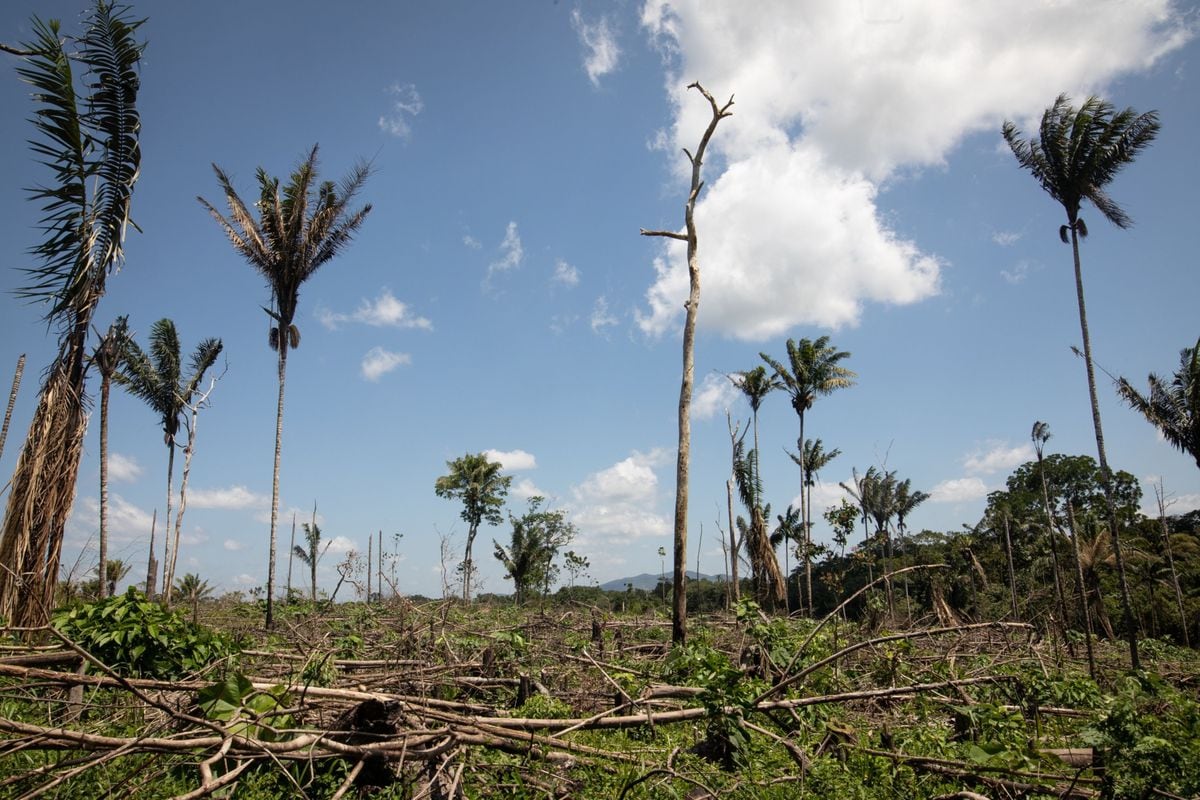The Amazon is increasingly threatened by accelerated deforestation.
Since 1990, every year 110,000 hectares of forest have been destroyed.
If Colombia continues as it is, the loss will be irreparable.
Researchers from the SINCHI Amazon Institute for Scientific Research have created a predictive model up to 2040 that studied three possible scenarios —the trend, the extractivist and the sustainable development— to measure the impact of devastation depending on land use.
Since the signing of the peace agreement between the Government and the FARC, fires and the exploitation of extensive livestock have increased, which implies the destruction of tropical forests for the planting of pastures and crops, because, according to researcher Uriel Murcia, Two hectares of pasture are required to support a head of cattle.
With this, deforestation has grown in the region.
In the scenario that depredation continues as it is, called "trend" by the researchers, that is, without any change in current trends in deforestation and land use, at least 2.1 million could be lost in 17 years. of hectares of forests, equivalent to the area of El Salvador.
The extractivist shows that, if cattle ranching and monocultures such as soybeans, corn and palm are encouraged, deforestation could have a double impact: 4.3 million hectares of forests would be lost, an area similar to that of all of Denmark.
The last scenario, of sustainable development, could avoid the deforestation of at least 3.5 million hectares.
This requires promoting agroforestry production systems, strengthening environmental leadership, and reducing violence and cattle ranching in forest areas.
The Amazon comprises 42.3% of Colombia's territory, with 483,164 square kilometers, an area practically equal to that of all of Spain.
"Protecting every hectare of the Amazon is important for climate change and biodiversity," explains William Agudelo, Doctor of Science.
In addition to extensive cattle ranching, tropical rainforests are threatened by illegal mining, logging, and land grabbing.
“If 40% of the rainforest is lost, forests could be heading for a tipping point or point of no return,” the study warns.
Aerial view of areas deforested by cattle ranches in the Department of Guaviare.Ivan Valencia (Bloomberg)
The SINCHI monitoring system, created in 2002, is supported by land cover maps from satellite images.
The study revealed this Monday marks a milestone: never before had a similar investigation been carried out, which simulated possible futures and the consequences in decision-making.
“We had always worked with what happened or what is happening.
With this series of models we anticipate situations in time.
The results will make it possible to adjust planning instruments, such as land use plans”, explains Uriel Murcia.
The prediction model has a 91% accuracy level, according to the study.
In 2020, the Colombian Amazon had 39,448,000 hectares of forest;
in 2022 there were only 39,146,000.
In other words, 294,000 hectares were lost, 0.75%, in two years.
“A hectare of native Amazonian forest has lasted thousands of years evolving and reaching that level of complexity of flora, fauna and ecosystem resources.
When deforestation takes place, many years pass before it comes close to having the same organization again”, says the researcher Murcia.
He explains that livestock farming has a greater impact on this loss than coca crops and emphasizes that the restoration processes are slow, given the degradation suffered by the forests.
The ecosystems of the Amazon provide oxygen and stabilize the climate, not only in the region, but in the rest of the world.
Monitoring makes it possible to know where deforestation is occurring and how much forest is being lost year after year.
"The forests that are being lost can help us protect the forests that we have left," warns the researcher Agudelo.
The study took into account 29 variables such as climate, soil characteristics, production practices and environmental degradation, roads, the limits of protected natural areas, among others.
The method also included interviews with environmental experts from the Amazon whose information they linked to the mathematical model.
In the business-as-usual scenario, forests are in danger.
The Amazon has a forestry vocation, not livestock.
According to Murcia, the economy could be stimulated in the area through ecotourism, agrotourism or agroforestry production, but in any case there is an urgency to save it.
“The Amazon is a fundamental factor in the life of humanity;
we must conserve the forests,” she says.
Agudelo is also concerned that deforestation is affecting indigenous reservations.
“One of the most important protected areas in the Amazon, Chiribiquete, begins to show deforestation.
The situation in the forests is complicated, ”he laments.
The scenarios proposed by the study will allow the State to make decisions and create strategies to protect biodiversity and reduce deforestation.
“It is more valuable for society to keep the Amazon forests standing than to allow the grave of 110,000 hectares a year, and then start making public investments for ecological restoration”, concludes Uriel Murcia.
Subscribe here
to the EL PAÍS newsletter on Colombia and receive all the latest information on the country.

